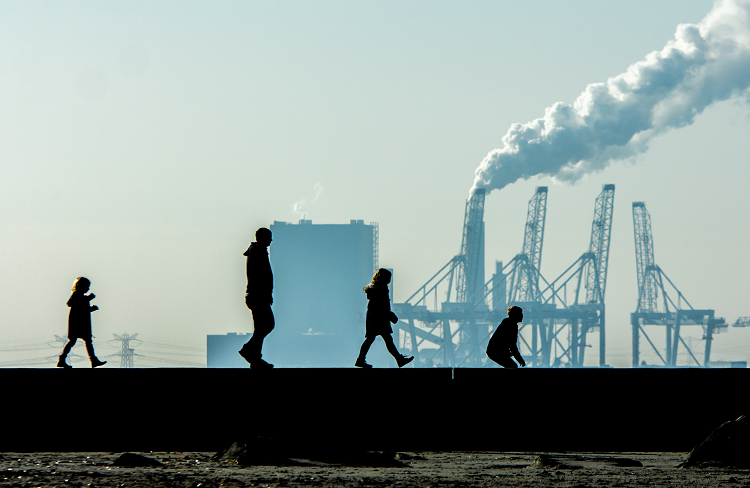Our Work Areas
Environmental Justice
Systemic racism in planning, zoning, and other policies has led to a concentration of hazardous facilities, such as incinerators, landfills, and industrial plants, in communities of color, low-income communities, and tribal and indigenous communities across the U.S. These frontline communities bear disproportionate exposures to toxic chemicals via land, air and water pollution; exposures that can increase risk of breast cancer and other chronic diseases.

Science summary
Communities suffering from environmental racism are often highly exposed to hazardous chemicals linked to breast cancer and many other diseases, from diesel exhaust with 1,3 butadiene and aromatic amines to industrial discharges of ethylene oxide to PFAS “forever chemical” contamination in drinking water. And while each of these pollutants alone can increase breast cancer risk, the mixture of these chemicals can magnify and multiply the harmful impacts of any single exposure.
Paths to Prevention
Read our groundbreaking report Paths to Prevention: the California Breast Cancer Primary Prevention Plan, in particular the following sections: Race, Power, and Inequities; Social and Built Environment; and Place-Based Chemicals Exposures. We used a social and racial justice lens to develop this 400-page report and its 330 community-based interventions and policy recommendations. It incorporates broad based solutions informed by the lived experiences of people directly impacted by environmental injustice, and weaves together science and local community wisdom to recommend systemic changes to reduce breast cancer risk for all Californians.
What’s happening in policy
BCPP advocates for laws and regulations that address environmental justice concerns to prevent breast cancer and foster healthier communities overall. Our recent work in this area includes:
- Submitted comments with partner organizations to the EPA on its evaluation of seven phthalates – regarding the need to consider racial disparities of exposure and harm. As a result, the EPA reopened the public comment period to receive additional information on toxicity, use and exposures for 20 chemicals.
- Support for the Environmental Justice for All Act (H.R. 2021/S.872), (Reps. Raul Grijalva (AZ) and Donald McEachin (VA), Sen. Tammy Duckworth (IL)). The bill establishes programs to address the disproportionate adverse human health and environmental effects of federal laws and programs on communities of color, low-income communities, and tribal and indigenous communities. For more information: bill fact sheet, bill text, and a legislative hearing record from the previous Congress.
- Raised awareness and mobilized public outrage to a 2020 Trump EPA policy that used the COVID pandemic as an excuse to rollback EPA environmental regulations that directly impacted fenceline communities.
- Submitted formal comments supporting the Congressional Statement of Principles for Environmental Justice Legislation.
- Urged the EPA to more strictly regulate exposures to ethylene oxide (EtO), a carcinogen strongly linked to breast cancer. Communities of color and low-income communities are disproportionately exposed to EtO through their proximity to facilities where EtO is used in manufacturing processes and to sterilize medical equipment.
Our Commitment
We support racial and social equity and an end to systemic racism. Our Commitment
Our Partners
We look to partner with communities in their efforts to eliminate place-based exposures and achieve environmental justice. Our partners in environmental justice include: Coming Clean, Environmental Justice Health Alliance for Chemical Policy Reform, California Environmental Justice Alliance, Californians for a Green and Healthy Economy and the individual organizations that are members of these alliances and coalitions.
Paths to Prevention: The California Breast Cancer Primary Prevention Plan
The first ever comprehensive primary prevention plan for breast cancer. This action plan to reduce 23 breast cancer risk factors offers systemic interventions, rather than individual actions, to stem rising breast cancer rates.
FEATURED VIDEO
BCPP: Exposing the Cause is the Cure
We're preventing breast cancer before it starts by eliminating our exposure to toxic chemicals and radiation.
